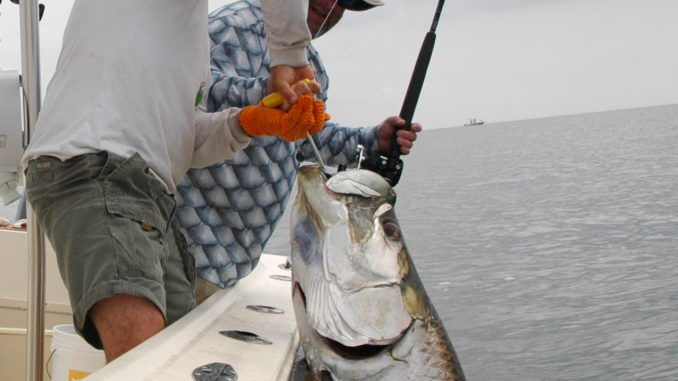
Fresh bait is among the most-important concerns for Pamlico Sound tarpon fishermen.
Tarpon eat enormous quantities of fish and crustaceans, including: shrimp, crab, menhaden, mullet, spot and croaker. With so much fresh, live bait to choose from, tarpon quickly shy away from soured and not-so-fresh offerings.
Menhaden and mullet can be netted on the day of a trip to facilitate having the freshest bait available, and many seafood markets carry fresh fish caught from the sound only days before that will work well.
Fishermen can go through an enormous amount of bait in a few hours; large quantities of bait are recommended and can be more economical when bought in large quantities.
Capt. George Beckwith of Down East Guide Service catches his fair share of tarpon, and fresh bait is something he never leaves the dock without.
“Fresh bait, whether it be mullet, menhaden, croakers or live fish caught boatside in tarpon waters, is a necessity,” he said. “Tarpon can be finicky, and good, fresh bait makes a difference from the start of a trip and while fishing. We keep all lines refreshed with good fresh bait every 10 minutes or so.”
To entice tarpon to visit their bait spreads, many fishermen consider chumming to be very effective. Tarpon in the Pamlico Sound will hang around with large schools of bait at almost any given time, so fishermen must have an edge.
Tarpon spend most of their time on the bottom, and they can be attracted by the scent trail of chum — along with many other scavengers and predators.
Capt. Gary Dubiel of Spec Fever Guide Service incorporates chumming into his tarpon fishing, and he uses chum that will get to the bottom where tarpon roam.
“Always use some sort of chum that will sink to the bottom. Sometimes, the best chum source is pieces of fresh bait tossed overboard,” he says.
Tarpon patrolling the bottom will pick up chunks of chum, often making a mistake and picking up a piece in which a 9/0 hook has been buried. But dry chum or water-soluble chum that can be sunk to the bottom can provide attraction when fresh bait is limited.
Editor’s note: This article is part of the Silver Sound feature in the August issue of North Carolina Sportsman. Digital editions can be downloaded right to your computer or smartphone.
Be sure to subscribe to ensure you don’t miss a single information-packed issue of North Carolina Sportsman.


Be the first to comment